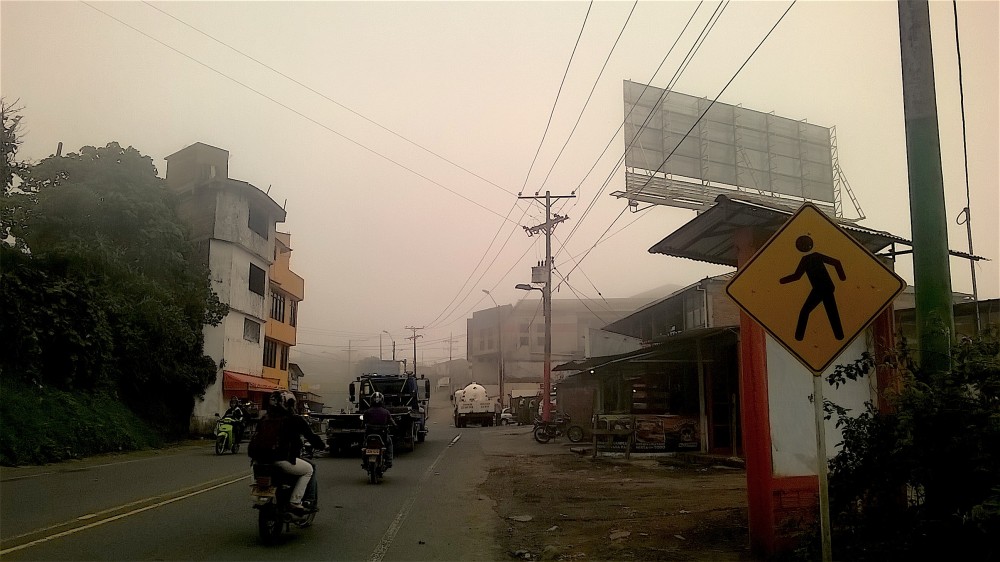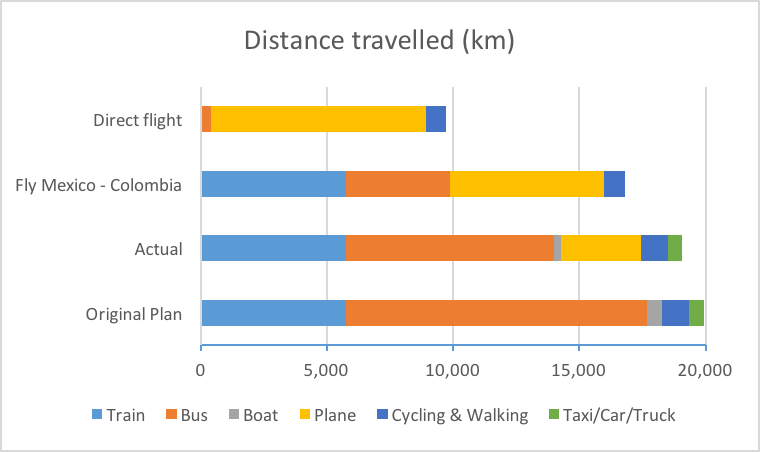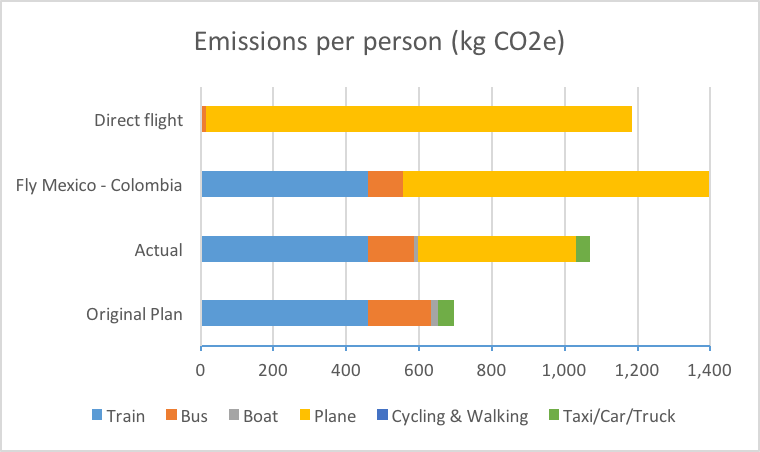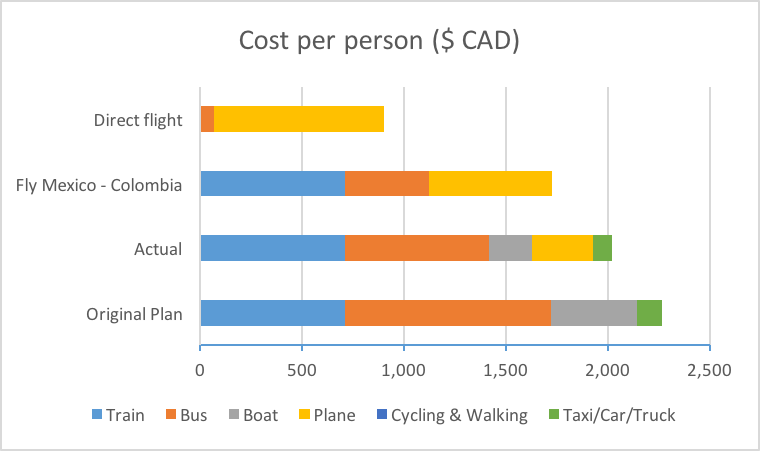
Is slow travel really better for the environment?
Julia and I decided to take a bike trip through Colombia for many reasons: the country is a major cycling destination, with a culture of respect for cyclists and breathtaking, challenging terrain. It's also a country that speaks Spanish, and we wanted to be able to communicate effectively during our trip.
Perhaps most importantly, Colombia is a place that we could get to without flying. Being environmentalists, we're well aware that taking fewer flights is one of the most effective ways to reduce your carbon footprint.
To put things in context, one round-trip flight to Colombia would cancel out all the greenhouse gases I save in a year by eating a vegetarian diet. So, we devised an itinerary of trains, buses, and small passenger boats to bring us to Colombia's Caribbean shore.
As we wound our way through the United States, Mexico, and Central America, I kept meticulous notes on distances travelled, mode of transportation, cost, and the number of passengers that happened to be with us at any given time. (A bus filled to capacity will have much lower emissions per person than one with only a handful of passengers.)

So, how did we do? Did our slow travel philosophy live up to expectations? Are we saving the planet one vacation at a time?
Well, kind of. We cheated a little bit. The bus travel through Central America was so horribly nauseating that we opted to fly from Bogotá to Mexico City on the return trip. From Mexico City back into Canada, there is pretty comfortable train and bus infrastructure. So we skipped the hard parts on the way back, and pumped an extra 400 kilograms of emissions into the atmosphere as a result.
Let's take a look at a few different scenarios. First, what we had planned to do:
Scenario 1: Original Plan
- Kitchener – Panama: Trains and buses
- Panama – Colombia: Small passenger boat with outboard motors to cross the Darién Gap
- Cycling to Cali, Colombia: 1,347 km (with a few short rides on minibuses along the way)
- See the rest of Colombia by bus
- Take boats, trains, and buses to get back home
- Total emissions per person: 695 kg
Scenario 2: Actual
Since we ended up taking the easy way back to Mexico, this is what our trip actually looked like:
- Kitchener – Colombia: Same as above
- Colombia – Mexico City: Airplane
- Mexico City – Kitchener: Trains and buses
- Total emissions per person: 1,071 kg
Scenario 3: Fly Mexico – Colombia
Now, if we were to do this trip all over again, our instinct would be to just skip over Central America completely.
- Kitchener – Mexico City: Trains and buses
- Mexico City – Medellin, Colombia: Airplane
- Cycling Medellin – Bogota: 1,037 km (plus a few shuttle buses)
- Bogota – Mexico City: Airplane
- Mexico City – Kitchener: Trains and buses
- Total emissions per person: 1,396 kg
Scenario 4: Direct flight
And lastly, what if we just flew directly from Toronto to Colombia?
- Kitchener – Medellin, Colombia: Airplane
- Cycling Medellin – Bogota: 1,037 km (plus a few shuttle buses)
- Bogota – Kitchener: Airplane
- Total emissions per person: 1,184 kg
Wait, it's more environmentally friendly to just fly all the way to Colombia, instead of taking the train to Mexico City first?
Yep.
Trains release fewer greenhouse gases than flying, per kilometre. But for long-distance travel, the zig-zagging of road and rail network eats into its advantage. Airplanes complete their journeys in a single, smooth arc. In the end, our "Actual" results only saved 100 kg of emissions compared to a direct flight from Toronto.


The moral of this story, I suppose, is that any long-distance travel will pack a hefty carbon footprint. But the amount of time required for slow travel means you're less likely to take as many trips, period. This is true in our case: we're not planning on taking another big trip until 2019, and in the meantime, we have no interest in taking cheap flights every winter to Caribbean resorts.
Now, there's also the matter of cost. If we compare the greenhouse gas emissions of this trip with the amount we had to pay, it's fair to ask whether that money could have been put to better use in fighting climate change.

Notes
Most of the emissions factors I used came from the UK's Department for Business, Energy, and Industrial Strategy (previously DEFRA). Their conversion factors reports are updated annually and used for reporting the greenhouse gas emissions of travel by government employees and regulated industries.
For Amtrak and VIA Rail travel, I used the emissions factors provided by the agencies themselves. (These numbers would be a lot better if our trains ran on electricity in North America.)
If you really want to dig into the numbers I crunched, feel free to download the Excel spreadsheet popup: yes.
Sam Nabi